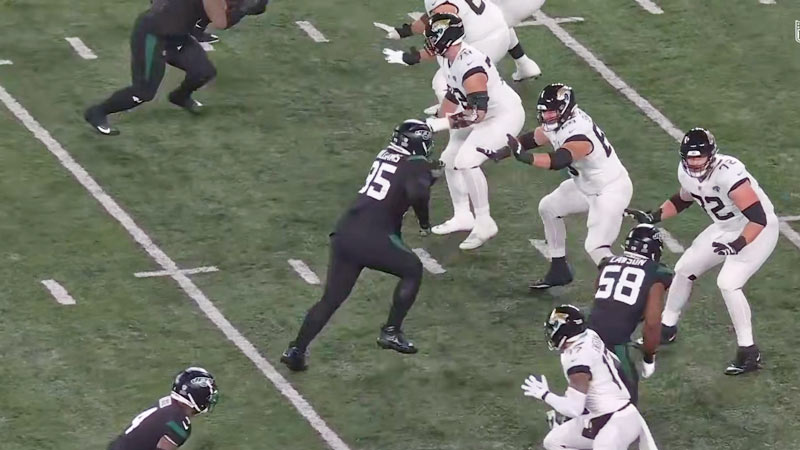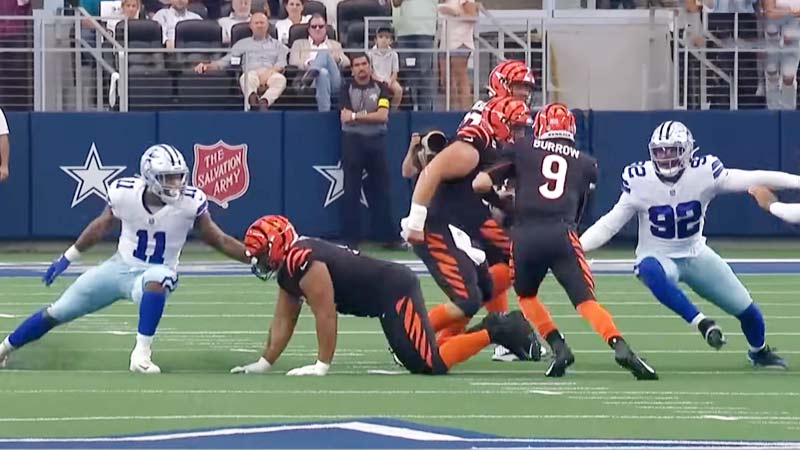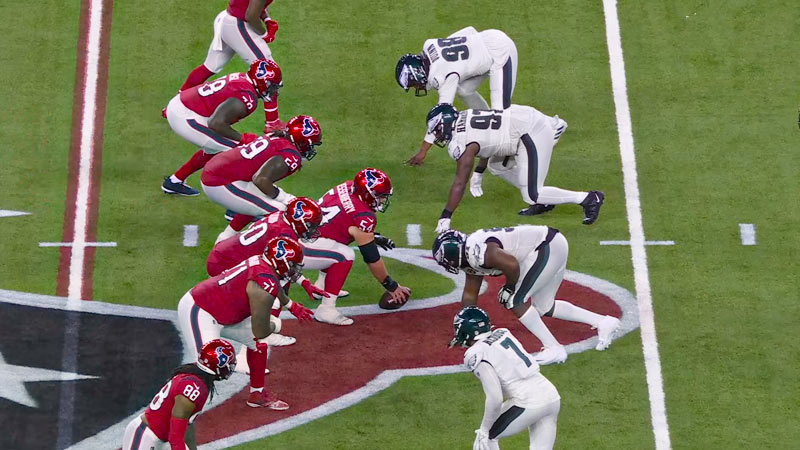In the intricate tapestry of football, certain moments stand out as game-defining turning points. One such juncture that has fans holding their breath and coaches strategizing feverishly is the “4th and 10.”
This seemingly straightforward combination of numbers encapsulates a critical scenario where teams are faced with tough decisions that can shape the outcome of a match.
In this blog post, we delve into the depth of this situation, understanding its importance, the strategic choices it presents, and its impact on the dynamics of the game. So, stay focused.
What Is Football 4th And 10?
In football, “Fourth and 10” signifies a pivotal moment in a game where the offensive team faces a critical situation. It denotes the fourth down, which is the team’s final attempt to advance the ball and achieve a first down. To succeed, they must cover a distance of 10 yards on this play.
The significance lies in the limited number of attempts – only four downs – allocated to the offense to progress down the field. Should they fail to cover the required 10 yards, possession of the ball is relinquished to the opposing team, potentially leading to a change in momentum.
This scenario often compels teams to make strategic decisions, such as whether to attempt the required yardage or opt for a punt, aiming to place the opposing team at a disadvantageous field position. The outcome of a “Fourth and 10” play can significantly influence the course of the game.
Strategy of Football 4th And 10
The strategy chosen for “Fourth and 10” depends on various factors including the current score, time remaining, field position, the team’s offensive and defensive capabilities, and the overall game situation. Each option carries its own set of risks and rewards, shaping the outcome of the game.
Field Goal in Football 4th and 10 Strategy

Opting for a field goal attempt during a “Fourth and 10” situation is a calculated decision. While 10 yards might be a challenging distance to cover for a first down, the team might be within range for a field goal attempt.
If the kicker has a strong leg and is accurate from that distance, attempting a field goal could yield three points, narrowing the score gap. However, this strategy depends on the team’s faith in the kicker’s ability, the current score, and the time remaining in the game.
Choosing a field goal can provide points, but it also relinquishes possession of the ball to the opponent.
Punts in 4th and 10 Strategy
In situations of “Fourth and 10,” punting is a common strategic choice. Punting the ball deep into the opponent’s territory aims to place them at a disadvantageous field position, making it harder for them to score.
A well-executed punt can force the opposing offense to cover a longer distance to reach the end zone. While this strategy sacrifices an immediate scoring opportunity, it prioritizes field position and aims to rely on the defense to halt the opponent’s progress.
Punting can be especially favored when the team is leading and wants to prevent the opponent from capitalizing on a good field position.
Going for It
Going for it on “Fourth and 10” is a bold and risky move. This choice indicates the team’s confidence in their offense’s ability to gain the necessary yardage.
Typically chosen when the team is trailing and needs to close the score gap or when time is running out, going for it involves attempting a pass play or run to reach the first down marker.
This strategy requires a well-designed play, strong execution, and accurate decision-making by the quarterback. While converting the fourth down can be a game-changer, failing to do so hands the ball over to the opponent in a favorable field position.
Field Position in 4th and 10 Strategy

Field position plays a crucial role in shaping the strategy for a “Fourth and 10” situation in football.
The term “field position” refers to the location on the field where the ball is located in relation to the end zones. The position of the ball greatly influences the decisions teams make during this critical down. Here’s how field position impacts the strategy:
Positive Field Position
If a team finds itself in a relatively favorable field position, closer to the opponent’s end zone, they might be more inclined to attempt the 10-yard gain.
This is especially true if they are trailing in the game or if there’s not much time left on the clock. In this scenario, the team might feel confident that they can convert the first down and continue their drive.
Neutral Field Position
When the field position is more neutral, and the team is around the middle of the field, the decision becomes a bit more nuanced. Factors such as the score, time remaining, and the team’s offensive capabilities come into play.
Teams might consider going for it, attempting a pass or run play, but they might also weigh the possibility of punting to pin the opponent deep in their own territory.
Poor Field Position
If a team is backed up close to its own end zone, the risk associated with attempting to convert a “Fourth and 10” becomes higher. In this scenario, punting the ball becomes a safer option.
Punting aims to shift the field position advantage to the team’s favor by forcing the opponent to cover a longer distance to score. This choice prioritizes minimizing risk and relying on the defense to prevent the opponent from scoring quickly.
Game Situation and Momentum
Field position doesn’t exist in isolation; it’s closely tied to the overall game situation and momentum. Teams might adjust their strategy based on whether they’re leading, trailing, or the score is tied.
If they’re behind and time is limited, they might take more risks. Conversely, if they’re ahead and have a strong defense, they might prioritize field positions and choose to punt.
Significance of Football 4th And 10

The significance of a “Fourth and 10” situation in football lies in its potential to heavily influence the outcome of a game.
This specific scenario represents a critical juncture where the offensive team has reached their fourth down attempt and requires a gain of 10 yards to secure a new set of downs. Several factors contribute to the significance of this situation:
Limited Attempts
The offense has exhausted three previous downs to move the ball down the field. “Fourth and 10” represents their final attempt within that set of downs.
If they fail to convert, possession of the ball is handed over to the opposing team. This limited number of chances intensifies the pressure to execute effectively.
Decision-Making
Coaches and players face a strategic dilemma. Choosing between going for it, attempting a field goal, or punting requires careful consideration of the team’s current position in the game, score, time remaining, and field position.
The choice made can have a profound impact on the game’s momentum and eventual outcome.
Momentum Shift
Successfully converting a “Fourth and 10” can lead to a significant shift in momentum. It keeps the offensive drive alive, potentially leading to points on the board and boosting the team’s morale.
Conversely, failing to convert can energize the opposing team, putting them in a prime position to seize control of the game.
Game-Changing Potential
A successful conversion on “Fourth and 10” can be a game-changer, altering the course of the match. It can enable the trailing team to continue their drive and possibly tie the game or take the lead.
Conversely, a stop by the defense can solidify an advantage for the leading team, making a comeback more challenging for their opponents.
Strategic Implications
The choice of strategy in a “Fourth and 10” situation highlights a team’s confidence in their offense, defense, and special teams. The decision reflects the coach’s strategic acumen and their understanding of the game’s dynamics.
Fan Engagement
The tension and drama of a “Fourth and 10” scenario captivate fans and viewers, making it a pivotal and nail-biting moment within the game. It’s a juncture where excitement and uncertainty converge.
“Fourth and 10” in football encapsulates the high-stakes nature of the sport. The outcome of this situation can sway the momentum, affect strategies, and ultimately determine the fate of the game.
FAQs
What is “4th and 10” in football?
“4th and 10” refers to a pivotal moment in a football game where the offensive team is on their fourth down attempt and needs to cover a distance of 10 yards to achieve a new set of downs. It’s a make-or-break situation that demands strategic decision-making.
Why is “4th and 10” significant?
The significance arises from its potential to shift momentum, alter strategies, and impact the game’s outcome. The limited attempts, along with the pressure to convert, create a tense atmosphere that engages players and fans alike.
What strategic choices do “4th and 10” present?
Teams face three primary options: attempting to gain the required yardage, opting for a field goal attempt, or punting the ball. Each choice involves weighing the team’s strengths, field position, score, and time remaining.
How do “4th and 10” impact momentum?
Successfully converting on “4th and 10” can swing momentum in the favor of the team on offense. It can energize players and fans, potentially leading to a game-changing drive. Failing to convert, however, can embolden the defense and alter the course of the game.
How does “4th and 10” reflect the essence of football?
“4th and 10” encapsulates the blend of strategy, execution, and unpredictability that defines football. It tests a team’s confidence, decision-making, and ability to perform under pressure, encapsulating the essence of the sport.
Wrapping Up
In the realm of football, the “4th and 10” moment stands as a microcosm of the game’s intricacies and drama.
It showcases the strategic depth, momentum-shifting potential, and electrifying uncertainty that makes football a beloved sport worldwide.
Whether it’s the heart-pounding excitement of a successful conversion or the collective gasp as a defense stops the play, “4th and 10” embodies the essence of competition and teamwork that makes football an enduring spectacle. Thank you very much.







